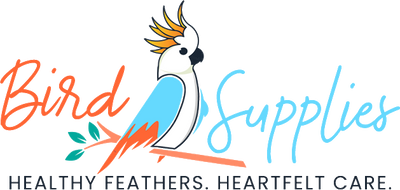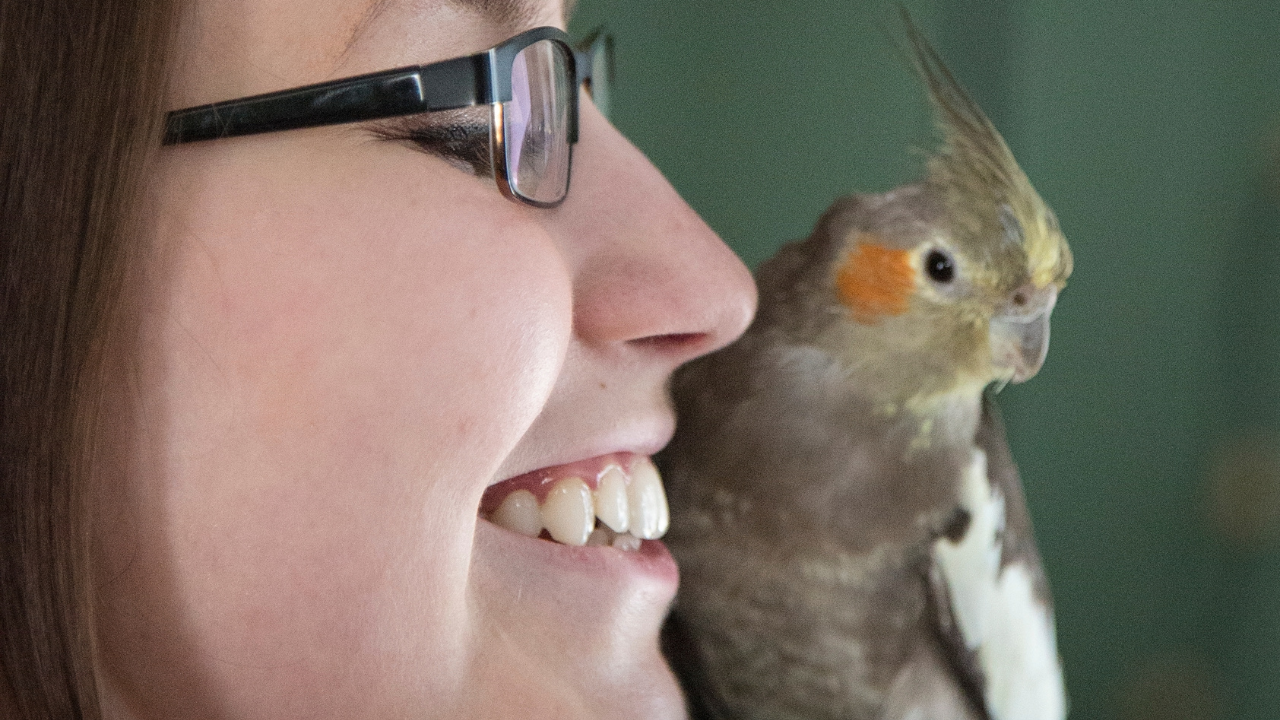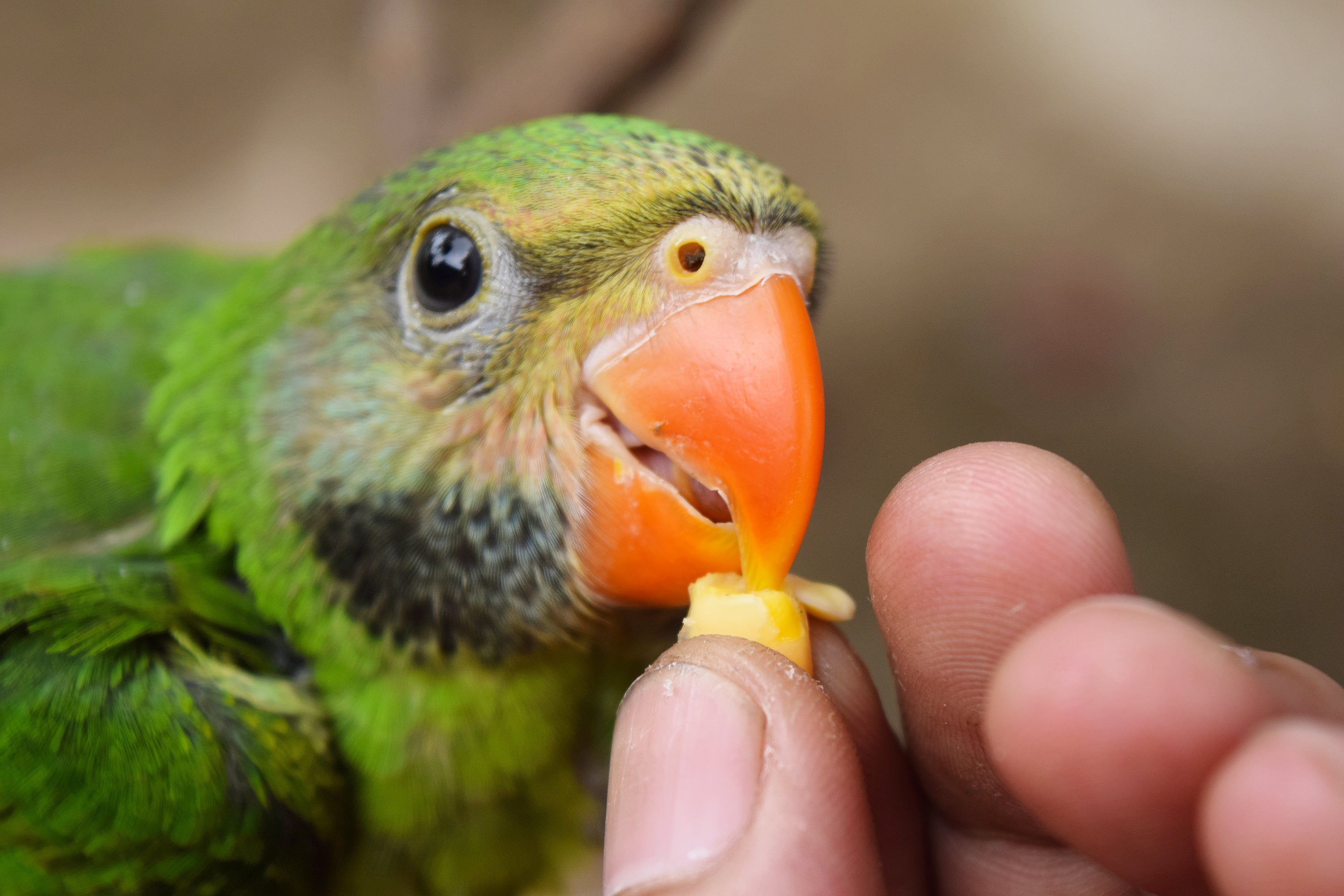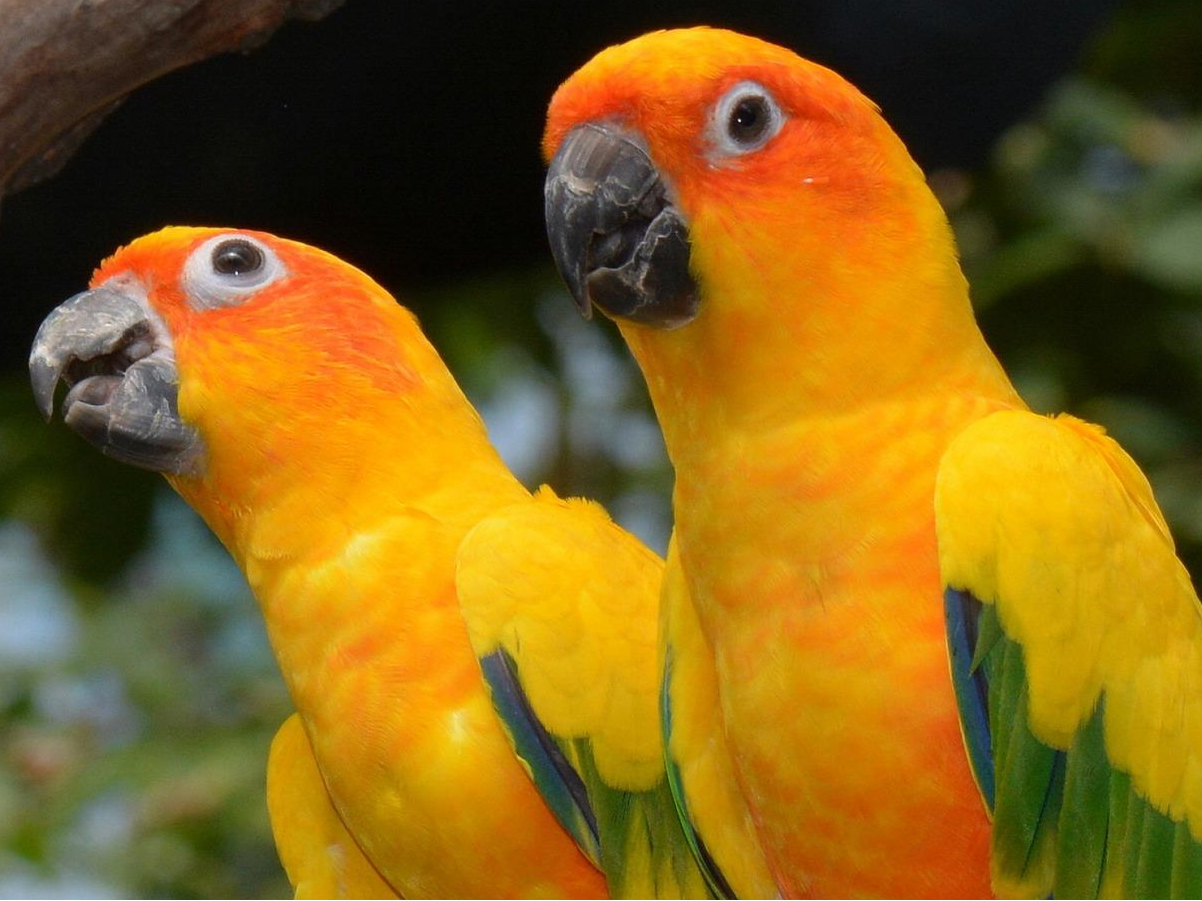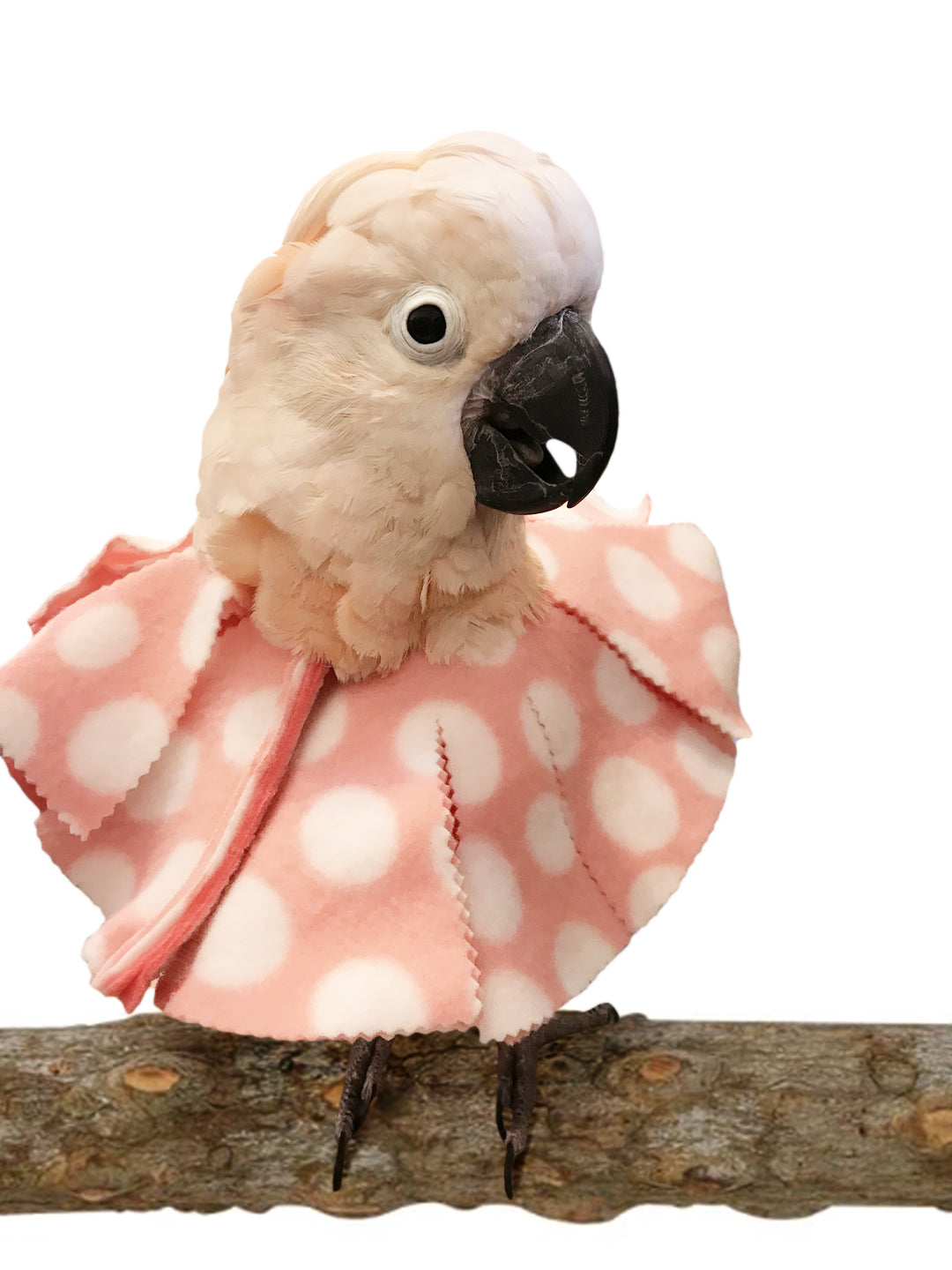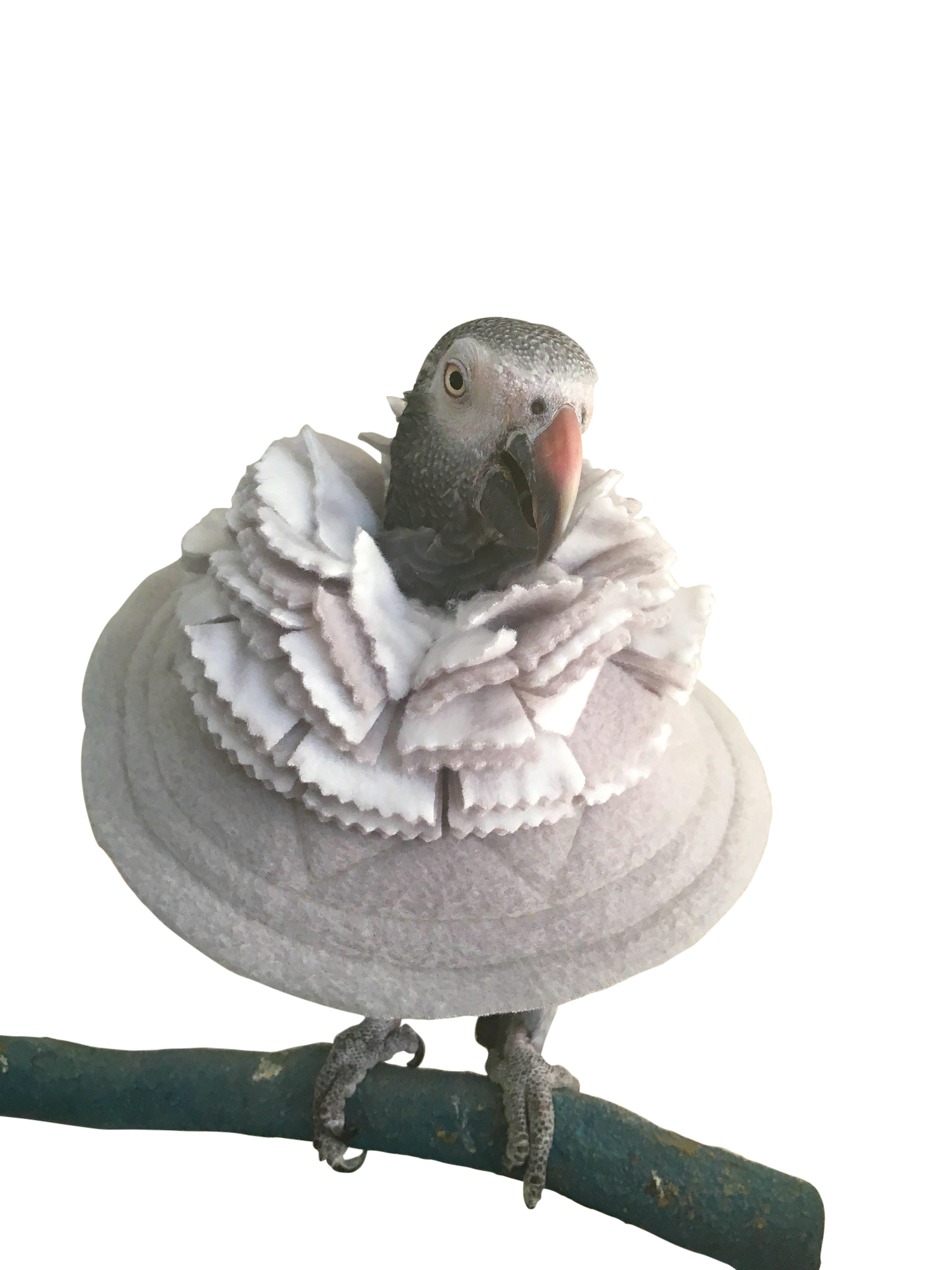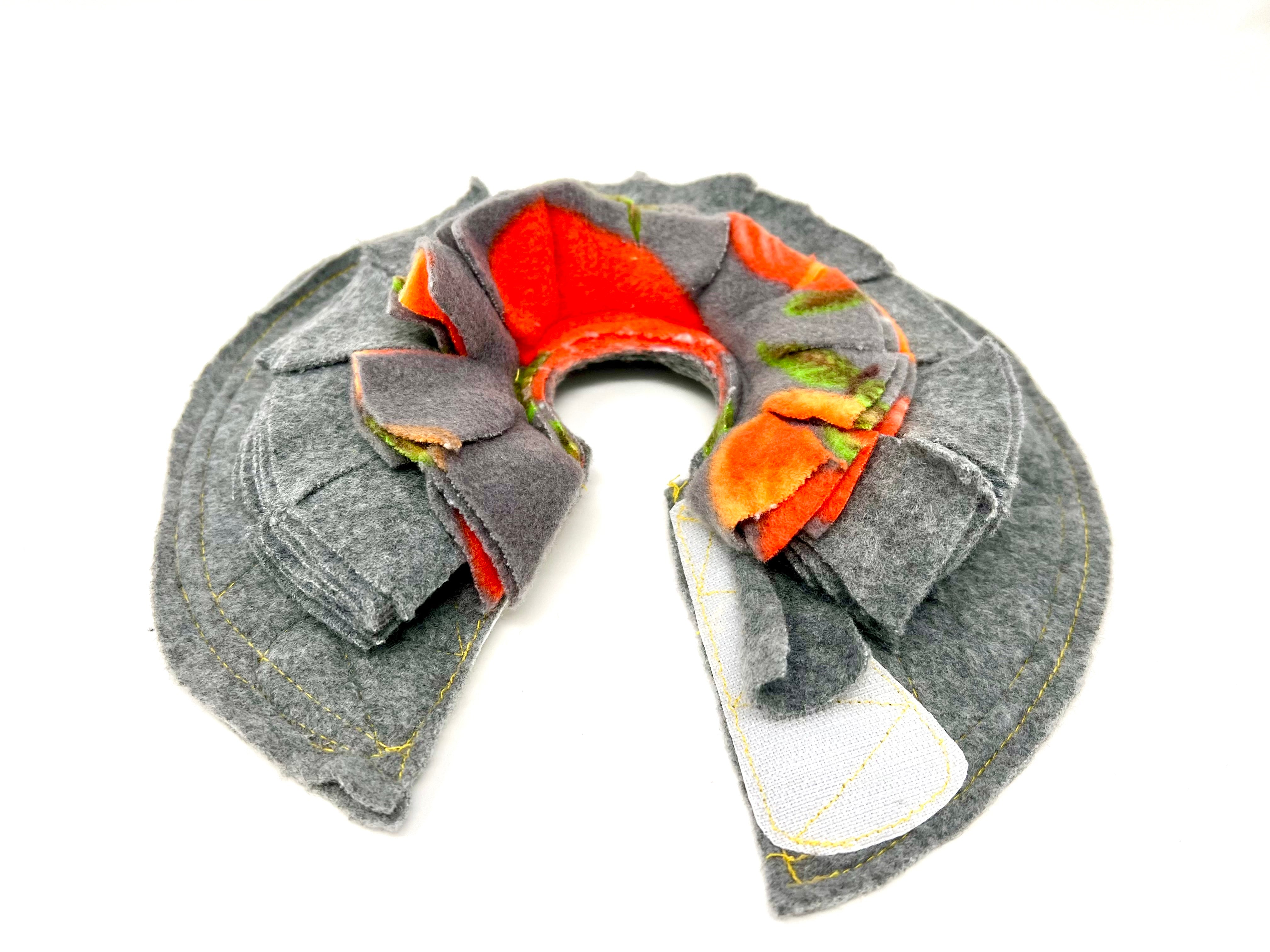Table of Contents
How do I get my bird to be quiet down?
OMG! Peachy, my cockatoo, is screaming so loud that I think that the neighbors are going to call the cops. Or, Timmy, my Timneh Grey, is pulling out his tail feathers.
Here, at BirdSupplies.com, we get messages like this every day. What do I have to do for a calm bird?
The truth is, you can't make your bird calm down if it's already over-excited. But, you can set up the environment for a calmer bird and you can reinforce calm bird behaviors.
First, it's important to realize that birds are exotic pets that continue to hang on to behaviors that serve them well in the jungle and rainforest. Birds are high energy Bach animals that communicate in an excited manner.
Bird's rely on their powerful voices to check and make sure that their flock mates are okay, even if they're miles away in the jungle. They also like to loudly warn their flock mates about potential danger.
Our pet birds are very intelligent and active during their waking hours. They have a tendency to be a little hyper active. But, by knowing these traits you can set up the environment to support a calm bird and you can reinforce calm bird behaviors, which will encourage your bird to be calmer more frequently.
How do you make a bird comfortable?
So, now that you realize that you can set up the environment for a calm bird and you can reinforce column bird behaviors But, think about these four take-aways:
- Your bird repeats a behavior that has been reinforced or rewarded. Make it a point to offer rewards when your bird is being calm.
- Focus on boredom busting foraging fun.
- Let your bird be a “noisy bird” once or twice a day.
- Feed your bird well for a calmer disposition.
What happens when birds get excited?
When you know how to read your bird's body language, it opens up a whole new level of communication with your pet. Your parrot will learn to recognize your body language, sort of, in due time, as well.
Birds have the emotional maturity of a three-year-old child. In other words, they are pretty ego-centric. And, that means, the burden of communicating with your bird lies on you. Learn bird body language that demonstrates that it's excited.
When a pet bird gets over excited it becomes very exuberant and sometimes even loud. However, it's very important to learn to read your bird's body language because that exuberant can switch over to aggression very quickly.
Parrots give warning when they’re losing the ability to contain their moving from excitement and exuberance and into aggression. These are some of the behaviors that a bird demonstrates as it is getting aggressive:
- Fluffed up feathers on the back of their neck
- Pinning eyes
- Lunging
This mood change can happen quicker than you can shake a stick. If you had a stick, that is. But, If you've learned to notice these behaviors you can back off and allow your bird to calm down.
Next, as soon as your bird has calmed down make it a point to reinforce numbered behavior with verbal praise. If you really want to get the message across that you enjoy calm bird behavior give it a treat and label the behavior,”Calm boy!”
The way that you accomplish this is by using positive bird training strategies.Learn more about positive reinforcement and the popular book, Clicker Training for Birds.
Learning when and how to use positive reinforcement is one of the most effective things that you can do for a calmer bird. The principle is simple.You simply offer your bird verbal and tangible rewards for the behaviors that you want to encourage. You don't have to punish an overexcited bird. You can simply walk away, thereby offering no reinforcements 4 behaviors that you don't find pleasing
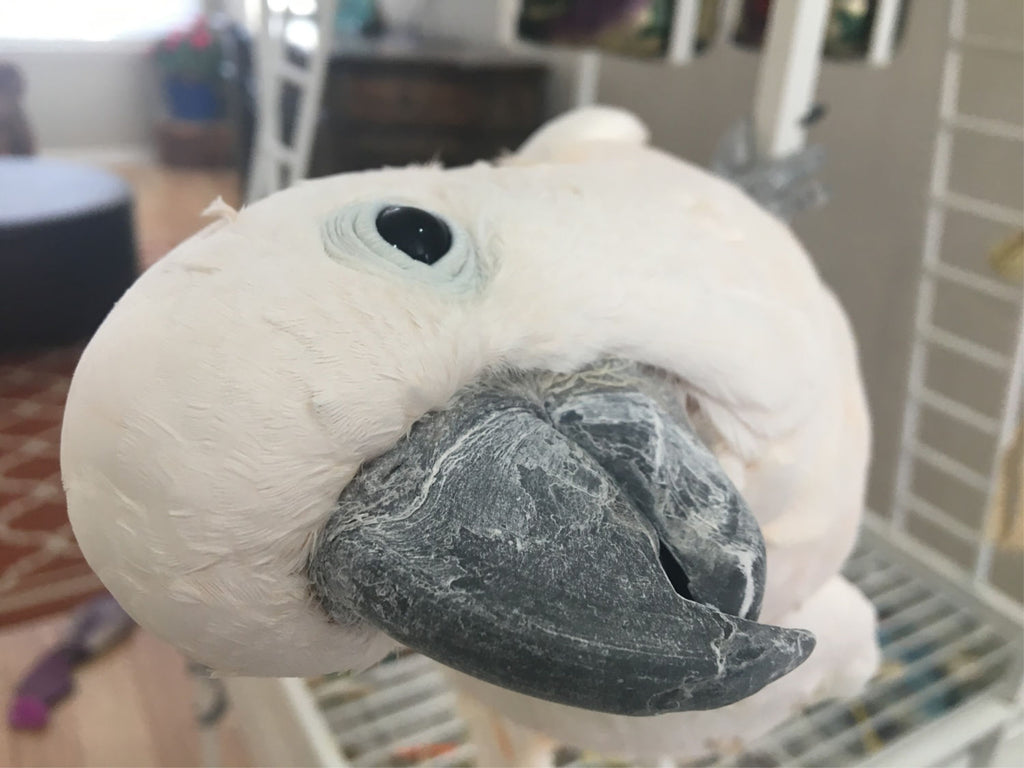
Positive reinforcement is the best way to communicate with your bird and it's one of the quickest and most reliable ways to turn around misbehavior. Most birds will bend over backwards for positive attention. Imagine how much calmer your bird will be when it knows exactly what it needs to do to get positive attention from you.
How do you calm a bird?
1. Teach calm bird behavior, but nurture nature
Parrots are naturally boisterous. That's how they communicate in the jungle. This behavior is a matter of life and death for wild birds and it is in your exotic pets genes.
Every bird behavior that happens over and over again has somehow been rewarded or your bird wouldn't keep doing it.
Imagine this scenario. Your bird is pitching a fit and you stop by and toss it a few treats to get it to hush up. You may even have a conversation with it..."Why do you keep screaming, you silly bird?"
In your birds mind, your bird actually hears this, “When you act crazy, you get a reward.” So, the next time that your bird wants attention or a favorite treat, guess what it will do?
Right.
It will pitch a fit. Once you know this, you can work on having a different response when your bird pitches a fit. Make it a point to reward the behaviors you want to see more of, not the ones you want to stop.
2. Reward Your Pet Bird’s Calm Behavior
When you're trying to calm your parrot down, make it a special point to always generously reward desired, calm behavior. Toss a treat in his dish as a reward. Or, stop and talk to your bird, whistle and dance with it.
Jingle a toy or play directly with the bird. A good head "scritch" will do the trick, too! Reward your bird for natural parrot behaviors such as playing, talking, whistling, dancing, performing a trick, and of course, foraging!
3. Read Your Pet Parrot’s Body Language
The single most important thing you can do to help your bird calm down is to learn to read its body language. But, how do you do this? You can't read your parrots mind!
The solution is to start teaching your bird basic tricks. I highly recommend the book, Clicker Training for Birds. Teach tricks such as, shooting hoops or waving on cue. As you are training your parrot, you learn to carefully watch your parrot's body language. You’ll become familiar with how his eyes and posture change with various emotional states.
You begin to observe whether your bird is paying attention to you and how it communicates what it wants and needs. Is it about to fly off of it's perch? Is it getting bored? Does it need more encouragement? These are all emotional states that you learn to read during trick training sessions.
As you learn to observe your bird's emotions, you can prevent anxious moments from getting out of hand.
Say your bird is afraid of a new play stand lurking in the corner of the room. You can calm your parrot down by reading its body language and introducing scary things slowly, reinforcing bravery along the way.
4. Speaking of Training, Train Your Bird Manners.
A lot of experts and parrot wellness talk about the importance of training your bird both natural parent behaviors, like foraging and grooming and essential bird manners like the following:
- Stepping Up On Cue
- Leaving in item alone
- Staying on their play Stand
- Going back to their place and if they've gotten off
- Tolerating bathing and other grooming activities
- Wearing a harness
5. Cue for Trained Behavior.
If you’re going to spend some time training your parrot, why not teach him some things that he can’t do and act crazy at the same time? For example, have you ever noticed that a bird can't scream and wave at the same time? Yes! It's a fact.
You can cue an already learned behavior to interrupt a fit. How about teaching your bird a special whistle. Then, cue the whistle when it's screaming.
The more that you get into the habit of giving your bird attention for doing the "tricks" that you've taught it, the less it will use problem behavior to get your attention.
6. Figure Out The Trigger
Even though number two was all about reading your parrots body language, you're not a parrot shrink. Sometimes, the only thing That you can change is the situation that triggers the behavior in the first place.
Behavior theory tells us that all behavior is sandwiched in between a trigger and a motivator. The trigger can happen so fast that sometimes it's hard to recognize. as bird behaviorists we often do a “Time Study” to figure out what the trigger of a behavior is.
Once you know what triggers a specific undesired behavior you can rearrange the environment so that your bird isn't getting triggered as much going forward.
Here's a quick example. My two African Grey's do not get along. Smokey intimidates Timmy and has even been known to bite his toes. Timmy took to pulling out his tail feathers whenever he was afraid that Smokey was going to attack him.
I wanted to address Timmy's feather plucking so I did a Time study and realized what was going on. Once I knew that Timmy was triggered by Smokey’s aggressive behavior I took steps to separate the two
Now, Timmy rarely plucks his tail feathers out.
7. Kick parrot meal planning up a notch
A busy parrot is a calm parrot. The best way to keep your bird busy is by offering up daily foraging opportunities. Foraging is when an animal has to work for its food. Wild parrots spend hours a day foraging for food.
They explore where food sources are at and then have to think about how to get to the nutrition. You can simulate these activities for your pet parrot to calm it down. Check out my book, Teach Your Bird How To Forage.
You'll be amazed at how fun it is to make foraging toys for your bird. But, even more amazed at the difference that foraging makes for calm bird behavior. A bird that has opportunities to occupy itself with natural foraging tends to be much calmer.
Speaking of diet, did you know that certain nutrients support a calmer mood? All of our bird calming supplements are natural with active ingredients like adaptogen herbs and seeds or natural amino acids that calm an over-anxious brain.

Pintrest: Niki Roberts saved to Northeast Avian Rescue - Ideas for the Birds
8. Provide Interesting Pet Bird Toys for Your Parrot
Why stop with enriching meal planning? Take the fun to the toy box. Parrots need toys that they can chew, pick apart and problem-solve with. Set up an enrichment schedule to remind yourself to rotate toys on a regular basis.
Re-use older toys that are still in safe condition or repurpose reusable bird toy parts. Peachy loves his stainless steel foraging bucket. I fill it with a bunch of toy parts and foot toys. And, I keep his interest alive by tossing in a few nuts and dried fruit treats that won't spoil.
9. Get Out of the Rut
Hey, we all love a good routine. But, on the other hand, we also thrive on special surprises. So does your bird. Shuffle up your bird care routine so that your bird feels special. Say that your normal weekend routine is to get your bird out of the cage at 9:00AM.
Guess who starts screaming at 8:00Am? After all, that wakes you up and you saunter to the cage to get your noisy feathered friend to quiet down.
Rather than rewarding the rambunctious behavior, how about getting your bird out when he's being quiet? Make it a real jackpot by cooking up your parrot's favorite warm breakfast. Did I hear someone say, "how about a warm vegetable omelet, birdie?"
10. Plan For Natural Parrot Chaos
Don’t forget that parrots will be parrots. You can’t expect perfect behavior all the time. There should be a time and a place for craziness. Some pet birds seem to love a grand session of loud vocalization and play at dawn and dusk. Others get going when you vacuum. They are all individuals.
One thing we know about disposition, when your bird has a good diet, gets plenty of sleep, and has opportunities for exercise every day, its mood will generally calm down.
If it isn’t repetitive, incessant behavior, make an allowance for the occasional burst of chaos. Why not enjoy it and join in? Bursting into song and dance is good for everyone’s soul.
Any one of these 10 steps can support column bird behavior. the more of these strategies you use the better.
If you’ve never trained a bird before, pick up bird training books here. Watch for events in your area. don’t forget the most important rule of sharing your life with a parrot. Have fun!
5 FREE Foraging Toy Ideas
- Empty food boxes stuffed with toys and treats.
- Brown paper sack loaded with shredded paper and some nuts.
- Tongue depressors wrapped in brown kraft paper.
- Empty paper towel rolls with treats inside and the ends squished closed.
- Clean cardboard egg cartons jammed full of crinkled paper and dried fruits.
5 Fun Behaviors To Train With Your Pet Parrot
- Target Training: Teach your parrot to touch a target stick for a treat.
- Transfer this to putting a ball in a basketball hoop
- Wave: Train your parrot to lift its foot up when you wave at it.
- Dance: Spin around in a circle and rock out to YouTube Video's for fun 1:1 time!
- Spread Wings: Lift wings up and bow for a "scritch" on the head.
4 Excellent Bird Calming Supplements
If you need immediate help for a calmer bird, consider natural, bird safe calming supplements. Here are a few of our best selling concoctions:
- UnRuffledRx Parrot Calming Formula.
- UnRuffledRx Bird Calming Tea
- UnRuffledRx Chamomile Tea
- UnRuffledRx Bird Hemp
Related Posts:
6 Ways To Train Your Bird Using Positive Reinforcement
How To Do A Time Study That Guides A Behavior Plan
Your all-in-one Clicker Training Guide
6 Reasons Why I love Clicker Training For Birds
Diane Burroughs, LCSW is a licensed psychotherapist trained in ABA therapy techniques. She specializes in avian anxiety disorders and is certified in Nutrition For Mental Health. Diane has written a number of bird behavior books and she offers behavior consultations. She's developed a range of UnRuffledRx Science-backed Parrot Wellness Supplies.
Diane's products have been featured in the Journal of Avian Medicine and Surgery and at Exoticscon, a conference for exotic pet veterinarians. Her bird collars & supplements are stocked in avian vet clinics and bird stores throughout the US. With over 30 years in the field of behavior, Diane has created thousands of successful individualized behavior plans that help pets thrive.
TAGS: #CalmBird #CalmBirds #HowToCalmABirdDown
SHARING IS CARING! PLEASE SHARE ON YOUR FAVORITE SOCIAL MEDIA NOW!
